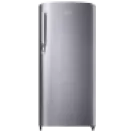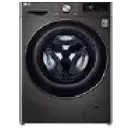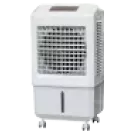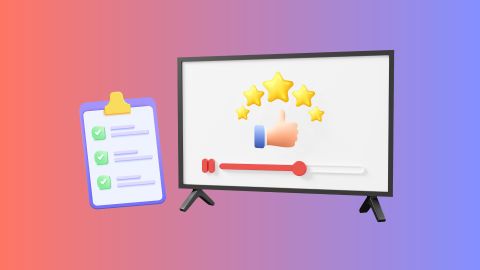Find the ideal inverter battery capacity on Bajaj Mall. Choose a reliable model tailored to your needs and benefit from a zero down payment offers for a smarter investment. Once you have made your decision, visit any of Bajaj Finserv's 1.5 lakh partner stores across 4,000 cities in India to complete your purchase. With Bajaj Finserv's financing options, you can buy your inverters on easy EMIs, making the purchase more affordable and convenient. Enjoy a seamless shopping experience and bring home a high-quality inverter without worrying about the upfront cost.
3 min
3-Jan-2025
Choosing the correct inverter battery capacity is crucial for maximising power backup efficiency. The right battery ensures consistent energy supply, long-lasting performance, and minimal disruptions during power cuts, keeping your essential appliances running smoothly.
Find the ideal inverter battery capacity on Bajaj Mall. Choose a reliable model tailored to your needs and benefit from a zero down payment offers for a smarter investment. Once you have made your decision, visit any of Bajaj Finserv's 1.5 lakh partner stores across 4,000 cities in India to complete your purchase. With Bajaj Finserv's financing options, you can buy your inverters on easy EMIs, making the purchase more affordable and convenient. Enjoy a seamless shopping experience and bring home a high-quality inverter without worrying about the upfront cost.
Find the ideal inverter battery capacity on Bajaj Mall. Choose a reliable model tailored to your needs and benefit from a zero down payment offers for a smarter investment. Once you have made your decision, visit any of Bajaj Finserv's 1.5 lakh partner stores across 4,000 cities in India to complete your purchase. With Bajaj Finserv's financing options, you can buy your inverters on easy EMIs, making the purchase more affordable and convenient. Enjoy a seamless shopping experience and bring home a high-quality inverter without worrying about the upfront cost.
Introduction: Why inverter battery capacity matters
The capacity of an inverter battery plays a crucial role in determining how long your appliances can run during a power outage. It directly impacts the efficiency, reliability, and backup time of your power system. Choosing the right battery capacity ensures uninterrupted performance for essential devices such as lights, fans, refrigerators, and even electronic gadgets. Modern inverters, like the Luminous Zelio 1100 inverter, are designed to work seamlessly with compatible batteries, optimising energy usage while delivering a consistent power supply. Understanding inverter battery capacity is essential to ensure that your energy backup meets your specific requirements efficiently and cost-effectively.
Investing in the right type of battery, combined with an appropriate inverter, ensures optimal performance, reduced operational costs, and long-term reliability for your home or business power needs.
You can simply visit one of our partner stores, select the inverter battery of your choice and convert the cost into Easy EMIs. You can choose to repay it in a convenient tenure of up to 60 months. This financing solution from Bajaj Finserv is available on 1 million products.
Understanding battery capacity and its units
- Definition of battery capacity: Battery capacity refers to the amount of energy a battery can store and deliver, measured in ampere-hours (Ah).
- Ampere-hour (Ah): This unit indicates the battery's ability to supply a certain amount of current over a specific period. For example, a 150Ah battery can deliver 150 amps for one hour or 15 amps for ten hours.
- Watt-hours (Wh): Another important metric, calculated by multiplying the battery capacity (Ah) by the battery voltage (V).
- Compatibility with inverters: Ensure that the battery capacity matches your inverter's requirements for optimal performance.
- Types of inverters: Devices likeUPS inverters are designed for quick switchover, while heavy-duty options such as the700-watt inverter are ideal for higher energy consumption.
- Battery lifespan: Higher-capacity batteries often have longer lifespans, especially when maintained and charged correctly.
Assessing your power requirements for everyday use
- Identify essential appliances: List devices like lights, fans, Wi-Fi routers, refrigerators, and other critical appliances you want to run during a power cut.
- Calculate total power load: Add up the wattage of all appliances that you plan to run simultaneously.
- Estimate daily usage duration: Consider how long you need these appliances to run on battery backup during an average outage.
- Choose an appropriate inverter: Opt for models like theLuminous inverter 1050VA for homes with moderate power needs.
- Factor in battery efficiency: Keep in mind that batteries lose some energy during conversion, and real backup time may vary.
- Plan for longer outages: If your area experiences prolonged power cuts, consider investing in a larger capacity battery to ensure uninterrupted supply.
Calculating backup time based on battery capacity
- Understand the formula: Backup time can be calculated using the formula:Backup Time (hours) = Battery Capacity (Ah) × Battery Voltage (V) × Efficiency (%) ÷ Load (W)
- Know your battery capacity: For example, a 150Ah battery paired with a 12V inverter can provide a different backup duration depending on the load.
- Account for efficiency losses: Inverter and battery efficiency are usually around 80–90%, depending on the model and maintenance.
- Load consideration: Higher loads will drain the battery faster, reducing backup time significantly.
- Practical example: A 150Ah, 12V battery running at 90% efficiency and a 300W load can offer approximately 5.4 hours of backup.
- Regular monitoring: Track battery performance to predict accurate backup time during outages and adjust load accordingly.
Types of batteries and their impact on capacity
Choosing the right battery type is critical for maximising your inverter's efficiency and backup performance. Different battery types offer varying levels of durability, efficiency, and maintenance requirements.- Lead-acid batteries: These are the most common and cost-effective options for home inverters. They require regular water topping and maintenance but offer excellent performance for short power outages.
- Tubular batteries: Known for their durability and longer life span, tubular batteries are ideal for heavy-duty applications and frequent power cuts.
- Lithium-ion batteries: These are lightweight, highly efficient, and require minimal maintenance. While more expensive, they offer superior energy storage and faster charging capabilities.
- Solar-compatible batteries: Batteries designed for solar inverters, such as those used withSmarten solar inverters, are optimised for energy generated from solar panels and provide sustainable backup solutions.
Investing in the right type of battery, combined with an appropriate inverter, ensures optimal performance, reduced operational costs, and long-term reliability for your home or business power needs.
You can simply visit one of our partner stores, select the inverter battery of your choice and convert the cost into Easy EMIs. You can choose to repay it in a convenient tenure of up to 60 months. This financing solution from Bajaj Finserv is available on 1 million products.
Explore inverter batteries on EMI with Bajaj Finserv
For uninterrupted power supply, choosing the right inverter battery capacity is crucial. Bajaj Mall offers a range of options to suit various energy requirements. Once you have compared specifications, visit your nearest Bajaj Finserv partner store to make your selection. With Bajaj Finserv's flexible financing plans, purchasing the right inverter battery is now simpler. Opt for a repayment tenure that fits your budget and enjoy paying through affordable Easy EMIs. Bajaj Finserv also extends financing options to other home appliances and electronics.Benefits of shopping with Bajaj Finserv
- Affordable pricing: Enjoy reasonable pricing on inverter batteries at Bajaj Finserv partner stores.
- Easy EMIs: Spread the cost of your inverter battery across convenient repayment plans with Bajaj Finserv’s Easy EMI options.
- Zero down payment: Selected inverter batteries come with a zero down payment facility, making the purchase easier.
- Wide range and accessibility: Choose from an extensive range of inverter batteries across multiple partner stores.
- Special deals and cashback: Unlock exclusive offers and cashback when purchasing an inverter battery.
- Complimentary home delivery: Get free home delivery on selected inverter batteries for a seamless shopping experience.
Inverters
Brands
- Luminous inverters
- Livguard inverters
- V-guard inverters
- Genus inverters
- Su-kam inverters
- Sine Wave inverters
- 1 KVA inverters
- 2 KVA inverters
- 5 KVA inverters
- 12V inverters
- 900 VA inverters
- 1500 watt inverters
- UPS inverters
- Solar Inverters
- Grid inverters
- Sine Wave inverters
- Square wave inverters
- Hybrid inverter
- UPS Vs inverters
- Exide Vs Luminous inverters
- Inverter buying guide
- Choose inverter for home
- Best solar inverters for home
Bajaj Finserv App for all your financial needs and goals
Trusted by 50 million+ customers in India, Bajaj Finserv App is a one-stop solution for all your financial needs and goals.
You can use the Bajaj Finserv App to:
Apply for loans online, such as Instant Personal Loan, Home Loan, Business Loan, Gold Loan, and more.
You can use the Bajaj Finserv App to:
Apply for loans online, such as Instant Personal Loan, Home Loan, Business Loan, Gold Loan, and more.
- Explore and apply for co-branded credit cards online.
- Invest in fixed deposits and mutual funds on the app.
- Choose from multiple insurance for your health, motor and even pocket insurance, from various insurance providers.
- Pay and manage your bills and recharges using the BBPS platform. Use Bajaj Pay and Bajaj Wallet for quick and simple money transfers and transactions.
- Apply for Insta EMI Card and get a pre-approved limit on the app. Explore over 1 million products on the app that can be purchased from a partner store on Easy EMIs.
- Shop from over 100+ brand partners that offer a diverse range of products and services.
- Use specialised tools like EMI calculators, SIP Calculators
- Check your credit score, download loan statements, and even get quick customer support—all on the app.
Frequently asked questions
How is inverter battery capacity measured?
Inverter battery capacity is measured in ampere-hours (Ah). This indicates that the amount of current a battery can deliver over a specific period, usually measured over 10 or 20 hours. For example, a 150Ah battery can provide 150 amps for one hour or 15 amps for ten hours.
What factors determine the required battery capacity?
The required battery capacity depends on factors such as total power load, duration of backup needed, and appliance wattage. Environmental conditions, inverter efficiency, and battery type also play a role. Accurately calculating your daily power requirements ensures you choose the right capacity for uninterrupted performance.
Is a higher-capacity battery always better?
A higher-capacity battery is not always better. While it offers longer backup time, it also requires a compatible inverter and takes longer to charge. Oversized batteries may lead to inefficiencies and unnecessary costs. Choosing a capacity that aligns with your power needs is the most efficient approach.
How do I calculate the ideal backup time for my needs?
To calculate backup time, use the formula:
Backup Time (hours) = Battery Capacity (Ah) × Battery Voltage (V) × Efficiency (%) ÷ Load (W).
Estimate your daily energy usage and apply this formula to determine the ideal battery capacity for your power needs.
Backup Time (hours) = Battery Capacity (Ah) × Battery Voltage (V) × Efficiency (%) ÷ Load (W).
Estimate your daily energy usage and apply this formula to determine the ideal battery capacity for your power needs.
Can I upgrade my inverter battery capacity later?
Yes, you can upgrade your inverter battery capacity later, but ensure that your inverter supports the increased capacity. Batteries with mismatched capacities or different types may cause performance issues. It is best to consult your inverter manual or a professional technician before upgrading.
Show More
Show Less











